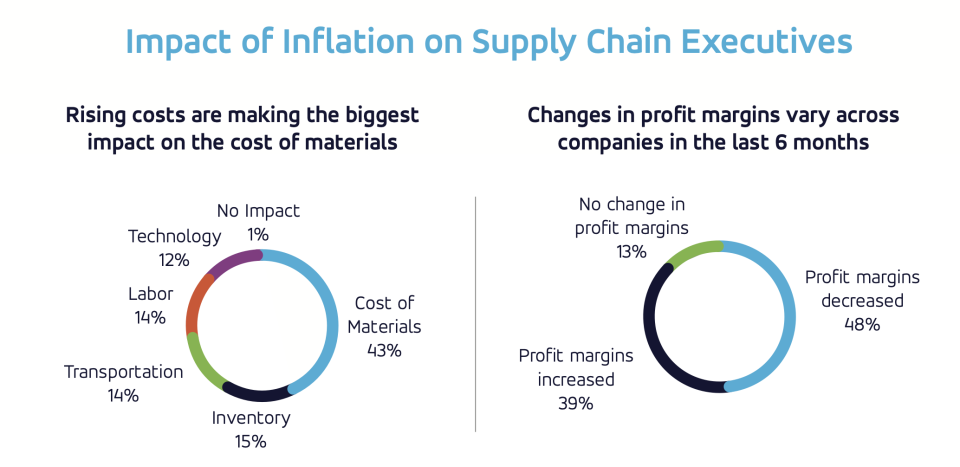Survey Reveals Supply Chain Leadership Woes

Blue Yonder’s latest read on supply chain leadership reveals ongoing concerns over inflation and continued investment in technology. But while the industry is investing in the latest bells and whistles, a tight labor market and a lack of training are creating a bit of a headwind.
Meanwhile, disruptions to the supply chain are still a problem.
More from WWD
In Blue Yonder’s 2023 Supply Chain Executives Survey, 87 percent of businesses report “experiencing supply chain disruptions within the last year, with over half (52 percent) citing customer delays as the most frequent outcome,” the report’s authors said. “Despite prolonged logistics challenges, however, most respondents (62 percent) indicated their supply chains were reliable enough to withstand the pressure.”
Chirag Modi, corporate vice president of Industry Strategy — Supply Chain Execution at Blue Yonder, said supply chain leaders “have come to expect the unexpected. After the initial supply chain shock in 2021, organizations sprang into action and invested in tools and technology that would help them preempt and weather the storm.”
Modi said the survey showed 52 percent of those polled have increased their overall supply chain investments in the last year, “with 38 percent reporting investments of at least $10 million.”
Regarding the impact of inflation, 43 percent of respondents said they face increased costs of raw materials. Other inflation-driven increases are in inventory, transportation and labor. And it is hitting the bottom line — hard. “Nearly half (48 percent) of respondents reported shrinking profit margins over the past six months,” the report stated.
In response to inflation and supply chain disruptions, 56 percent of executive leaders polled are making investments in technology, which includes warehouse management systems (44 percent), order management systems (39 percent), supply chain visibility tools (36 percent), and transportation management (30 percent).
The report’s authors said the continued “pouring of resources into these systems suggests that the widespread shift toward omnichannel commerce and fulfillment has not yet reached its conclusion. Business leaders still see ample opportunity to improve their processes and deliver superior experiences for customers.”
But are these investments paying off?
Blue Yonder said 54 percent of those polled have experienced improved efficiencies, while 42 percent noted fewer disruptions and 39 percent reported revenue growth. Still, there is a need to address labor issues and training.
Researchers at Blue Yonder said supply chain leaders “remain laser-focused on attracting and retaining talent, with 42 percent reporting increased investments in their workforce, up from 40 percent in 2022. A staggering 87 percent of organizations have implemented new initiatives to stay competitive in today’s tight labor market, with 51 percent offering more competitive pay and bonus structures and 40 percent creating more flexible scheduling options.”

Once aboard, the focus shifts to training and management. Blue Yonder found that 47 percent of respondents “plan to address the tight labor market in the next 12 months by investing in workforce management technology and another 47 percent plan to enhance workforce training procedures.” Thirty-two percent of those polled said they plan to increase automation investment across supply chain networks.
Hong Mo Yang, senior vice president of Industry Strategy — Manufacturing at Blue Yonder, said the current labor market and the substantial skills gap in supply chain management “have pushed organizations to double down on training and overall employee experience. Modern supply chains are grounded in cutting-edge technology. To take full advantage of industry-leading data-intensive tools, business leaders must pull out all the stops to ensure their teams are supported, intellectually stimulated, and appropriately compensated.”
The survey also found a commitment by businesses to continue investing in sustainable practices as well as AI and machine learning.
Best of WWD


